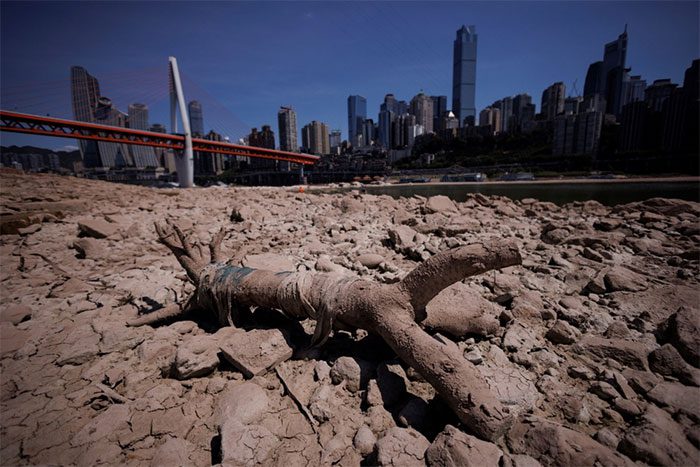Scientists state that “flash droughts” are increasing globally as climate change raises temperatures and alters rainfall patterns worldwide.
Drought is typically a slow-onset phenomenon that can last for months or years due to a lack of rainfall.

The Jialing River, a tributary of the Yangtze River, runs dry in Chongqing, China, on August 18, 2022. (Photo: Reuters).
However, a study led by Chinese scientists reveals that there has been a global shift from slow-developing droughts to rapid-onset droughts that can become severe within weeks, as reported by the South China Morning Post on April 16.
Unlike slow-developing droughts, which arise from a gradual decrease in rainfall, flash droughts occur when rainfall is low, combined with other factors such as high temperatures, which can quickly accelerate evaporation from the ground and vegetation.
The concept of “flash drought” was proposed in the early 2000s but received little attention until a severe drought struck the United States in the summer of 2012, according to a study published in the journal Science on April 13.
This flash drought is considered one of the most severe droughts in the U.S. since the 1930s, resulting in over $30 billion in economic losses.
Last summer, China experienced its most severe drought and heatwave in six decades, affecting electricity, food supply, and manufacturing operations.
Previous studies have shown that human-caused climate change has increased the frequency of flash droughts in Southern Africa and China. However, the research found that from 1951 to 2014, droughts lasting 2 weeks to 3 months “developed more rapidly and transitioned from slow droughts to flash droughts on a global scale.”
According to the study, over 74% of the global area—excluding the Amazon and West Africa—has witnessed an increase in both the rate of flash droughts and the speed of their onset over the past 64 years.
The transition to flash droughts is most notable in North and East Asia, Australia, Europe, the Sahara Desert, and the western coast of South America.
“The results indicate that the transition to flash droughts is occurring steadily and rapidly in a warming future,” the study states.
Justin Sheffield, a co-author of the study and a professor at the University of Southampton in the UK, mentioned that climate change has accelerated the onset of droughts.
“As we move toward a warmer future, flash droughts are becoming the new normal,” Sheffield said.


















































